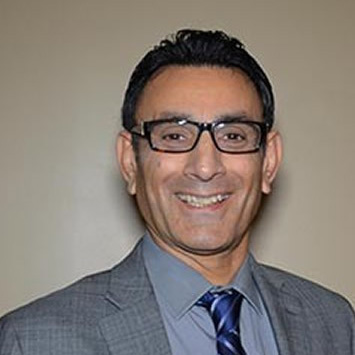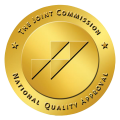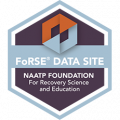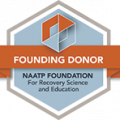Drinking and driving refers to operating a vehicle when alcohol has impaired a person’s judgment or motor skills. It is a crime in all U.S. jurisdictions, but penalties vary by state. Drunk driving causes more than 10,000 deaths each year, according to the National Highway Traffic Safety Administration, NHTSA. That is 28 people a day in the U.S. and about one person every 52 minutes. It is the leading cause of car accidents. Individuals who drink alcohol before getting behind the wheel are at a higher risk for wrecking their vehicle and injuring themselves or others.
The NHTSA estimates that drunk driving is responsible for about a third of all traffic fatalities in the United States. In 2019, drunk driving deaths reached their lowest level since 1982, when the NHTSA began collecting data.
According to the NHTSA, in 2020, despite Covid, alcohol-related traffic accidents didn’t reduce even with less traffic on the road. Police reported alcohol involvement in 9% of crashes. About 27% of drivers were involved in drunk driving fatal crashes from March 17, 2020, through September 30, 2020.
Who Is Most at Risk?
Intoxicated drivers pose a risk of causing an accident or other serious injuries. According to the NHTSA, alcohol-related driver fatalities increase among young adults ages 16-20 years. The second highest risk for alcohol-related crashes is drivers between 21 and 24.
Dangers of Driving Drunk
Drinking alcohol while driving can lead to numerous problems. The effects of alcohol abuse vary greatly. However, drunk driving has many side effects that can be devastating.
Alcohol is most commonly linked to fatal motor vehicle crashes because it influences how the body works. When a driver drinks alcohol, the alcohol affects the parts of the brain that control movement and balance, reaction time, and vision.
It can impair the driver’s ability to judge speed and distances properly, slow their reaction time, and make them unable to focus clearly on objects in front of them. The following covers some of the ways alcohol impairs your driving skills.
Drowsiness
Drowsiness can cause the driver to feel sleepy and sluggish. It can lead to difficulty in concentrating on the road. It leads to drivers missing important information while driving, such as not following traffic rules and not slowing down at a red stop sign. Being unable to react quickly when a dangerous situation occurs causes serious car accidents and fatalities.
Distorted Vision
Alcohol consumption causes blurry vision that impairs the driver’s view on the road, making driving difficult and dangerous to both the driver and other drivers. Impaired vision can cause drivers to misjudge distances and make risky driving decisions. It can also make drivers drive off the road or into oncoming traffic, causing severe or fatal traffic accidents.
Impaired Decision-Making Skills
When a driver drinks too much alcohol, the post-intoxication effects of alcohol slows the brain’s processing speed and impairs judgment, affecting decision-making skills. Alcohol makes people lose their focus and concentration, which can cause drivers to make mistakes that they could have easily avoided. The driver may be less likely to pay attention to warning signs or the car’s control mechanism and lose the ability to react accordingly.
Slowed Reaction Time
Alcohol intoxication affects a driver’s reaction time by decreasing the speed of nerve impulses from the brain to the body’s muscles. It takes longer for the driver to react to dangers and slows down the response time. Therefore, if they’re driving and an unexpected event occurs, it’ll take their brain longer to process the situation and prevent an accident.
Unconsciousness
Apart from all the dangers that result from impaired driving skills, physical harm also occurs. When a driver drinks too much alcohol and cannot hold themselves upright anymore, they may lose consciousness. The car will continue to move in whatever direction the driver is steering. It is especially dangerous when moving fast or on roads with sharp turns and curves. The car will drive recklessly, and the driver will not regain consciousness fast enough to avoid an accident.
Decreased Coordination
Usually, reflexes are the first protection mechanism for encountering a dangerous situation while driving. They help a driver react quickly to prevent crashes and injuries. Alcohol consumption reduces the body’s reflexes, affecting a person’s coordination and balance. It can lead to running into pedestrians, colliding with other cars, and swerving across the road. If the driver moves too fast when they lose control of their coordination, serious car crashes are more likely to occur.
Memory Lapse
Alcohol consumption also impacts memory and causes blackouts. It can be detrimental to your driving skills, as it may result in missing out on important information or instructions that could prevent an accident. You could potentially miss signs and signals not only while you are driving but also while parking.
Potential Legal Ramifications
Besides the dangerous and adverse effects of alcohol consumption, drivers also face legal repercussions. In the United States, driving with a blood alcohol concentration, BAC, level above a certain limit is illegal. When pulled over and tested for drunkenness by a police officer, the driver can be fined and arrested. In most states, drivers caught driving with a BAC above 0.08% face a fine or jail time. This limit remains constant in all states except Utah, which has a BAC limit of 0.05%.
Recognizing the signs of being intoxicated can help prevent accidents and avoid liability for accidents. The following steps show that a driver is intoxicated:
Sobriety Test
Some states have implemented field sobriety tests. These are a series of tests that a police officer can perform to determine whether the driver is drunk. The field sobriety test requires drivers to do things such as stand on a single leg and walk in a straight line, balance on one foot and count backward from 100 to zero, among others.
Breathalyzer Test
Alcohol breathalyzers are devices that test for alcohol in the breath. The police can compare BAC levels from a breathalyzer test to a blood or urine test, which can help determine when a driver has been drinking and if any BAC limit has been exceeded. In most states, drivers can be convicted for driving under the influence even if their BAC is below 0.08%. There is mandatory jail time or fines upon conviction of driving under the influence.
Consequences of a Drunk and Driving Offense
Loss of License
Depending on the state, refusal to take a breathalyzer can be a misdemeanor by law, resulting in a fine or even jail time. It can also mean automatic suspension of your license, depending on how many offenses the driver has had. If there are repeat offenses and suspension of license, it can lead to more serious consequences, including jail time.
Vehicle Impoundment
If you get caught driving drunk and are convicted, the police have the power to impound your vehicle. In some instances, driving under the influence will lead to vehicles being impounded and confiscation of license plates, which means owning a car may not be a possibility anymore if you are convicted of drunk driving.
Jail Time
Depending on the state and driver’s criminal record, a driver can be jailed for driving under the influence. In states that have mandatory jail time, you will have to go to jail if convicted of driving drunk.
Ignition Interlock Device Restrictions
The court can require a driver to install an ignition interlock device. It is very expensive to maintain, and the requirement is often mandated after multiple driving convictions. This device requires breath to be analyzed to start or turn off the car. If your blood alcohol content is higher than 0.08%, this device will not allow the car to start.
Alcohol Abuse Evaluations
After a conviction of driving impaired, the court can make you visit an alcohol abuse evaluation center to ascertain whether you have a drinking disorder and need help or if your usage is harmless and can be stopped. If not treated, there is a high risk of repeating the offense and ending up in more serious legal problems.
Mandatory Alcohol Abuse Treatment Programs
After your first, second, or third offense, if the court finds that you have a drinking problem, you may be sent to an alcohol treatment center. You will require intensive care and rehabilitation to address needed changes to your behavior regarding drinking. It can help prevent future offenses and the consequences of a drunk driving crime.
Monitored Sobriety
After a conviction for drunk driving and possible hospitalization, the court can require that you attend a monitored sobriety program. It is usually served as probation but will require close monitoring and rehabilitation.
Alternatives to Drunk Driving
The goal of prevention is to reduce the occurrence of drunk driving. Prevention is usually done by educating the public on drinking and driving. Many public awareness campaigns are run to inform teenagers and their parents about the dangers of drunk driving. Clinical programs can also help people develop positive coping skills to prevent DUI.
However, the problem of drinking and driving can be rapidly reduced when people take the initiative by evading the situation completely. There are many other alternatives that you can do instead. These include:
Walking
If you are drunk and not fit to drive, the best thing you can do is walk to your destination. Walking is a good way to sober up and cool down. It is safe, healthy, and the recommended choice to do to avoid car crashes.
Staying Sober
If you are going to be driving, it is better not to drink at all. You can avoid all the consequences, including license suspension, vehicle impoundment, and imprisonment.
Have a Designated Sober Friend
If you plan to consume alcohol, it is advisable to have a friend who will be your designated driver. It is important that your designated driver does not drink so they can drive you or anyone else who has been drinking home safely.
Take a Taxi or Uber
If you are going to be drinking, you can take a taxi or an Uber, which is safe and convenient.
Programs and Initiatives
Some different initiatives and programs have been implemented to reduce the rate of drunk driving. Some of these include:
Designated Driver Programs
Designated driver programs are community-based programs that work as an alternative to drunk driving. It is a campaign that encourages designated sober drivers to pledge not to drink and drive. Clubs and organizations promote the program by having their members commit to drinking responsibly by designating a sober driver or using public transportation.
Alcohol Server Training Programs
It is a program that trains bartenders and servers on how to identify signs of intoxication and refuse service when necessary. It also provides alcohol education and training to businesses that engage in the sale of alcohol to ultimately combat drunk driving.
Contact First City Recovery Center
Drunk driving may be a symptom of alcohol addiction. Addiction can have adverse effects on a person’s life and create a great deal of suffering for their loved ones. Continuing to drink despite a DUI conviction is a sign of alcohol abuse. It can be managed and treated to prevent further harm.
While drunk driving has dangerous consequences, the right support and care can effectively treat alcohol addiction. Call us today at First City Recovery Center. We consider rehabilitation as the most effective long-term solution for the problems caused by alcohol abuse, including drunk driving. Our team of professionals is always available to provide insight into your questions and help you get started on your path to recovery.
















